August 8, 2022
Palm oil prices expected to remain weak in the short-term, container rates peak 280% above pre-pandemic levels
1 RM (Malaysian Ringgit) = 0.22 USD
1 USD = 0.82 GBP
Crude Palm Oil
Average Palm Oil Export Prices
-
Indonesia
$1,565/tonne (-$206/tonne) -
Malaysia
$1,479/tonne (-$247/tonne)
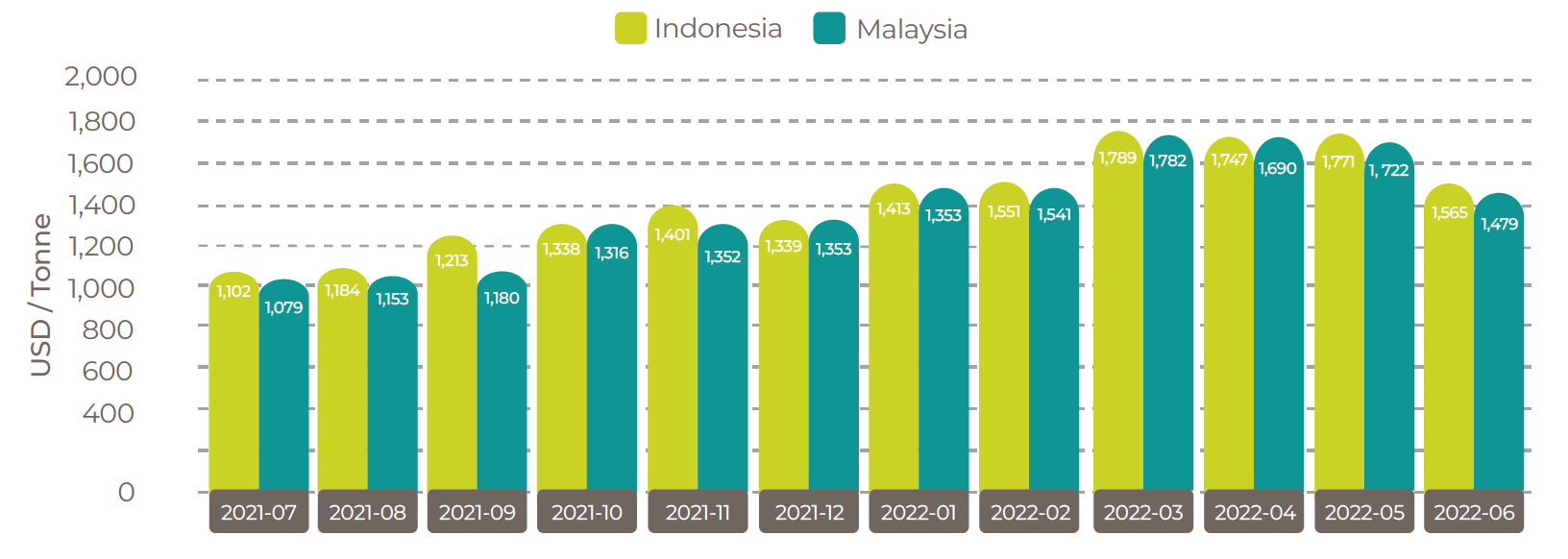 Source: USDA Foreign Agricultural Service
Source: USDA Foreign Agricultural Service
Malaysia palm market
As reported in the July 15 Palm Update, Crude Palm Oil (CPO) settlement prices hit a 12-month low, bottoming out at 3,568 RM/tonne ($801.08) on July 14. Throughout the month, prices have remained volatile, opening on July 4 at 4,350 RM/tonne ($976.65) and closing on July 29 at 4,289 RM/tonne ($962.95). With an average settlement price of 3,922.63 RM/tonne ($880.70), the market was considerably behind June’s average of 5,526.81 RM/tonne ($1,240.86).
According to Julian McGill, the Southeast Asia head of commodity consultancy firm LMC International, market signals are indicating weaker prices in the short-term. This is a result of a build up of stocks in Indonesia following the government’s prior export ban.
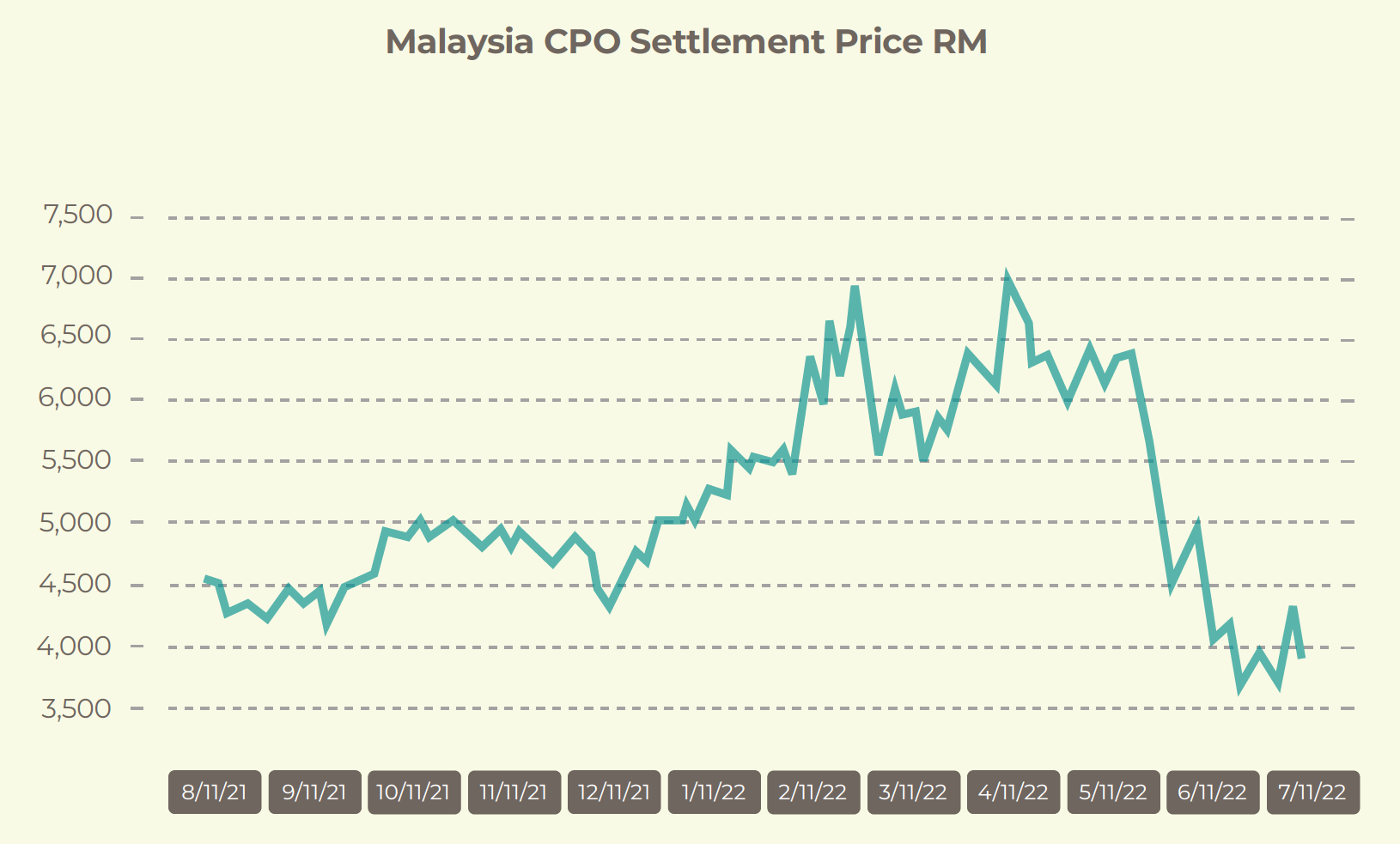
Reported by Reuters, McGill has said there will be “a weakness in prices as Indonesia becomes a truly distressed seller.”
In the Week #30 Oil Market Report from oil and fat manufacturer Olenex, Malaysian stocks were expected to increase as exports decrease due to a more competitive market in Indonesia. Various surveyors found exports from July 1-25 to have decreased between 2 and 11 percent.
Soybean oil
June 2022 Soybean Oil Export Prices $/tonne
According to USDA, lower vegetable oil prices, including soybean oil, is a result of palm oil stock build-up in Indonesia following its export ban.
“Vegetable oil prices fell precipitously in June, underpinned by slack demand due to high prices. Increasing exportable supplies of palm oil in Indonesia also contributed to falling vegetable oil prices. Vegetable oil prices in early July continued to fall with palm oil roughly down a third from early June and South American soybean oil down nearly 20 percent. The discount for palm oil vis-à-vis soybean oil widened further in early July. U.S. soybean oil prices also declined in June but at a slower pace relative to South American origin as domestic vegetable oil supplies remain tight and as demand for biodiesel feedstocks continues to provide support,” says USDA’s July Oilseeds report.According to USDA, lower vegetable oil prices, including soybean oil, is a result of palm oil stock build-up in Indonesia following its export ban. “Vegetable oil prices fell precipitously in June, underpinned by slack demand due to high prices. Increasing exportable supplies of palm oil in Indonesia also contributed to falling vegetable oil prices. Vegetable oil prices in early July continued to fall with palm oil roughly down a third from early June and South American soybean oil down nearly 20 percent. The discount for palm oil vis-à-vis soybean oil widened further in early July. U.S. soybean oil prices also declined in June but at a slower pace relative to South American origin as domestic vegetable oil supplies remain tight and as demand for biodiesel feedstocks continues to provide support,” says USDA’s July Oilseeds report.
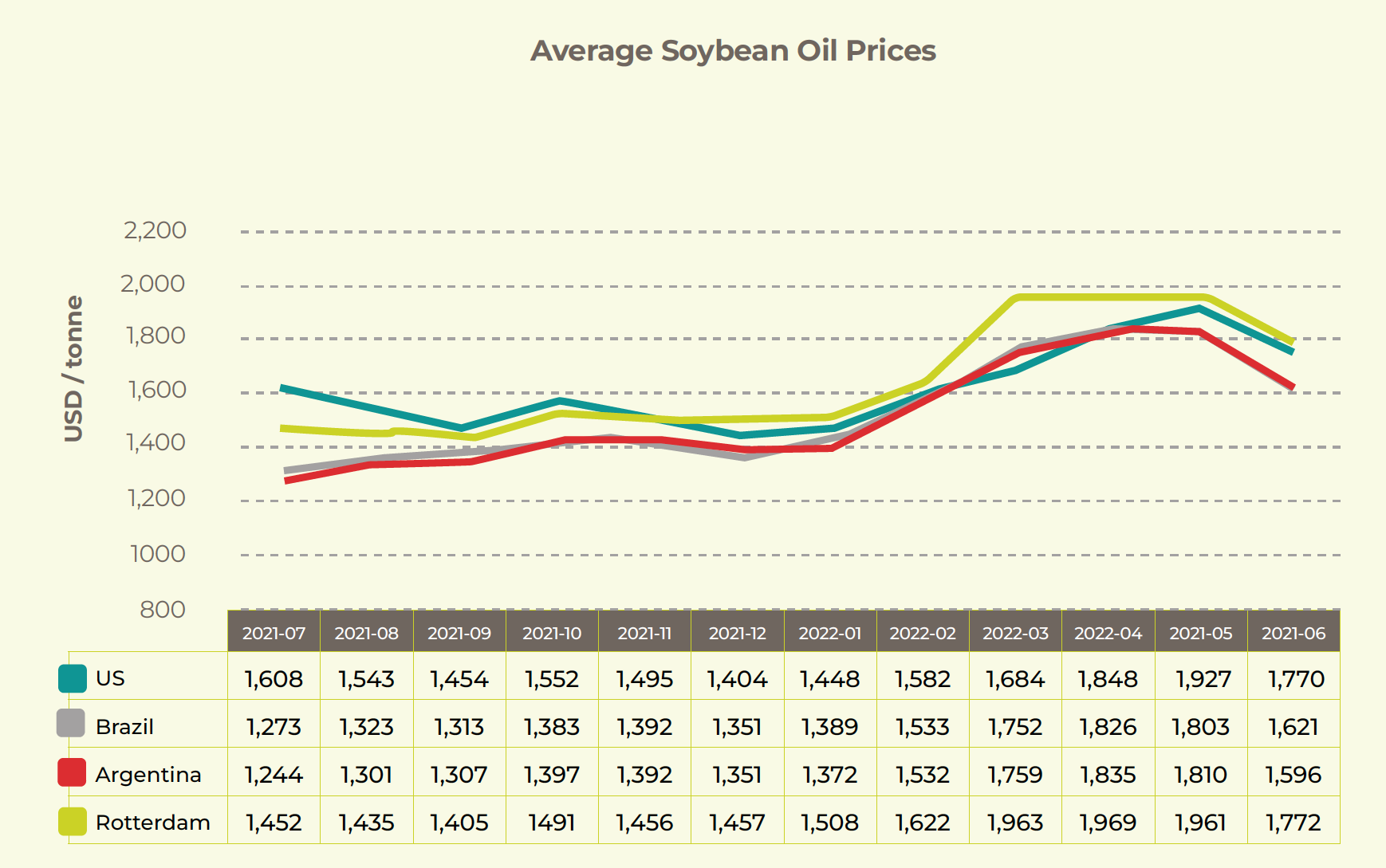
Rapeseed oil
Average Rapeseed Rotterdam (Canola) Oil Prices 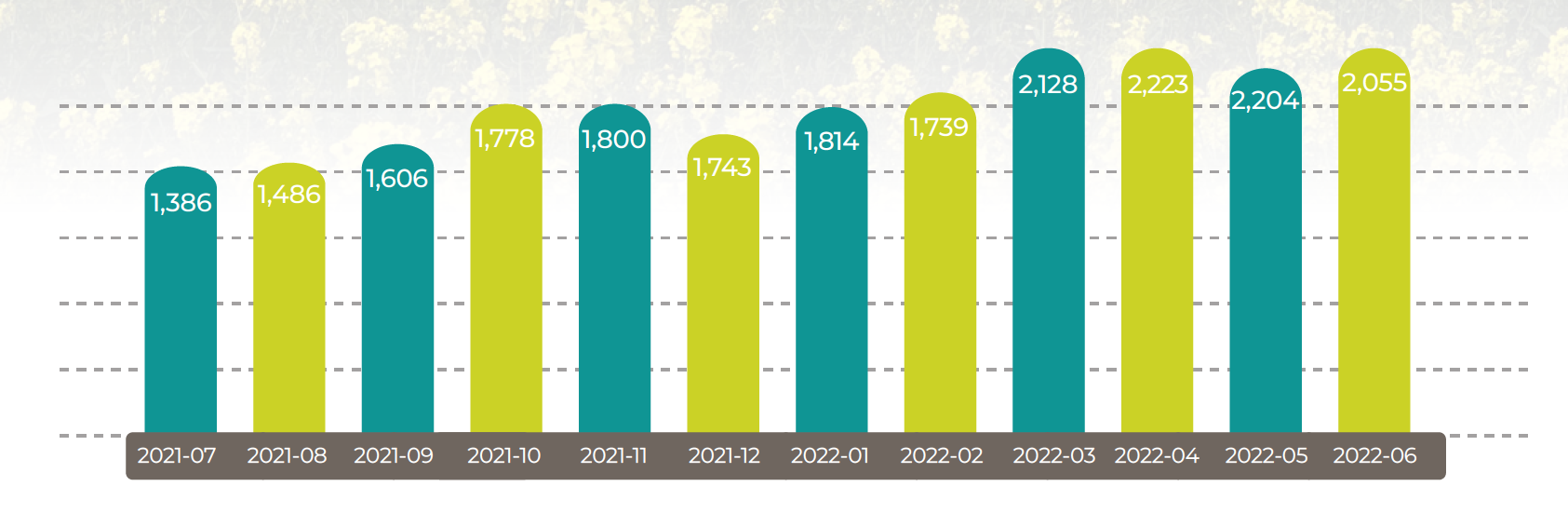 Sunflower oil
Sunflower oil
Average Sunflower Seed Oil Prices
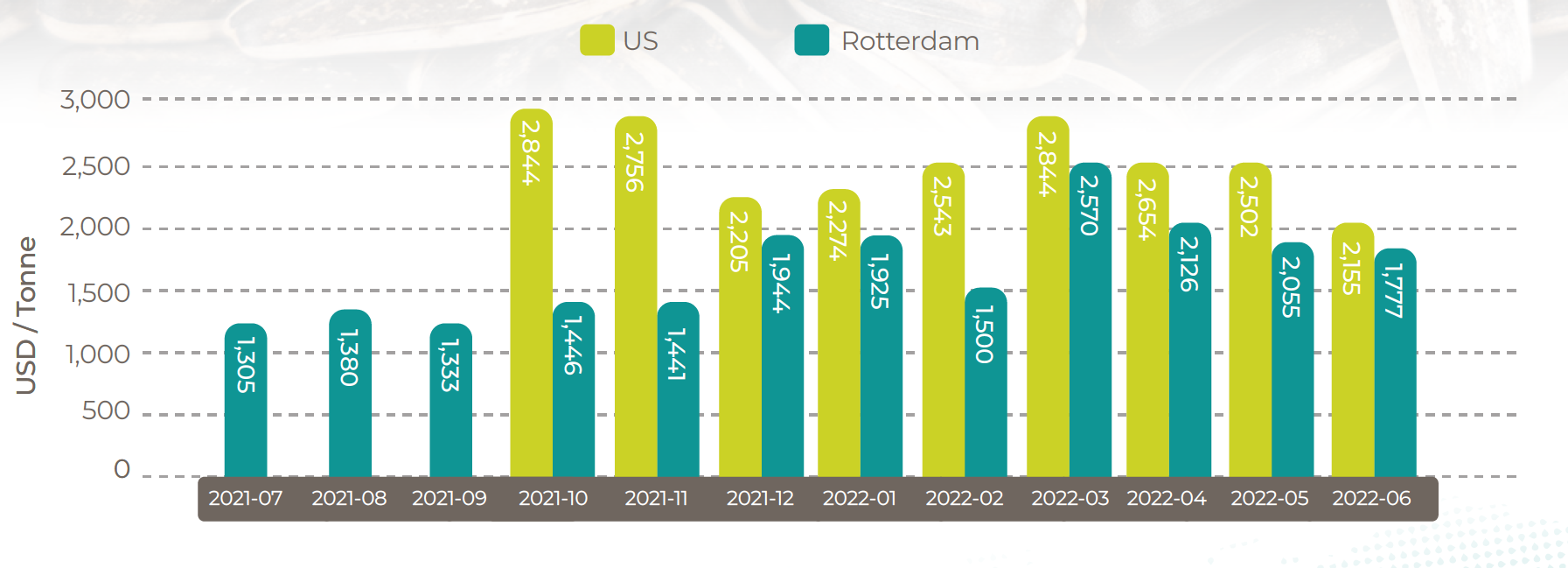 Shipping update
Shipping update
Container rates may have peaked - 280% above pre-pandemic levels
Analysis on long-term container contracts and spot rates by Xeneta, an ocean freight rate analysis firm, has suggested “prices may have peaked.”
In reporting by Seatrade Maritime News, Xeneta CEO Patrik Berglund says, “The carriers have enjoyed staggering rates rises, driven by factors such as strong demand, a lack of equipment, congestion and COVID uncertainty, for 17 of the last 19 months. July has seen yet more upticks across the board, but the signs are clear there is a ‘shift’ in sentiment as some fundamentals evolve.”
Along with seeing lower demand to and from Europe in the first half of 2022, July increases in contract rates were the lowest since January.
Port of New York and New Jersey sets container fee, mandatory export levels
After months of the US dealing with congestion the East Coast, the Port of New York and New Jersey will be fining long-dwelling import or export containers. The port is handling an additional 34 percent more containers than its pre-pandemic level, with a 12 percent increase in the last year alone.
“Under the new rules, ocean carriers’ total outgoing container volume must equal or exceed 110% of their incoming container volume during the same period. If they fail to achieve this, the ocean carriers will be charged $100 per container of imbalance. Rail volume is not included,” reports American Shipper.
The container fee will go into effect on September 30.
Insurers offer $50m to cover Black Sea shipping under Russia-Ukraine grain deal
Carrying 26,000 tones of corn, the first ship carrying grain from Ukraine under the Black Sea deal set sail on August 1. The shipment is the first of many, which have been deemed essential for both future crop production in Ukraine to clear out full stores and to also ease global food security concerns.
Concerns about the safety of the passage have remained high throughout the agreement and the days following, escalating after Russia attacked the port of Odesa less than 24 hours after the agreement was made.
Due to the war, insurance premiums have surged for Black Sea passages. Prior to the invasion, premiums were 0.025 percent of the value of the ship, and have since risen to 5 percent.
For the highly anticipated ships carrying grain out of Ukraine under the new deal, Insurance market Lloyd’s of London have offered coverage up to $50 million.
Disclaimer: The information in this document has been obtained from or based upon sources believed to be reliable and accurate at the time of writing. The document should be for information purposes only and is not guaranteed to be accurate or complete.